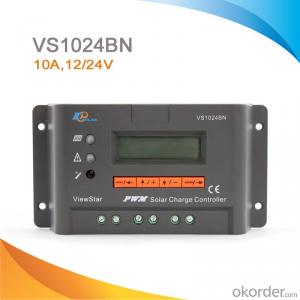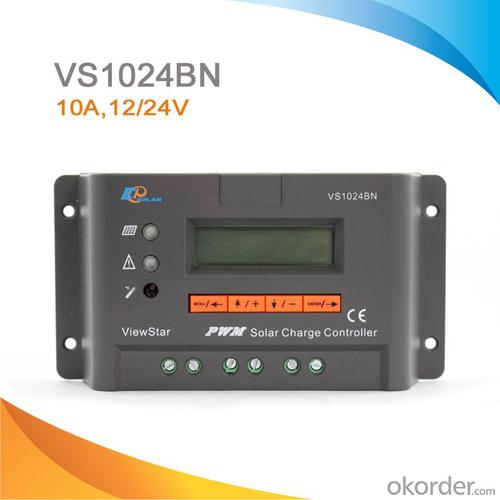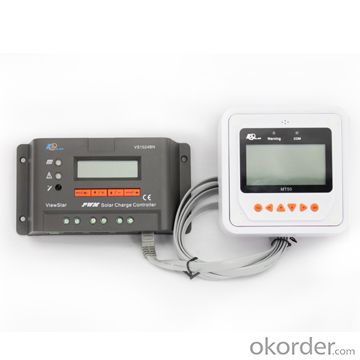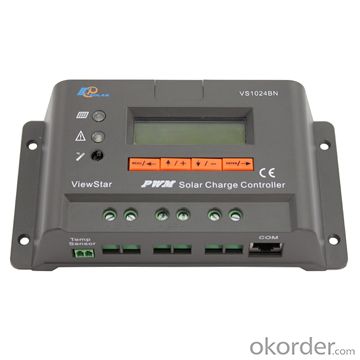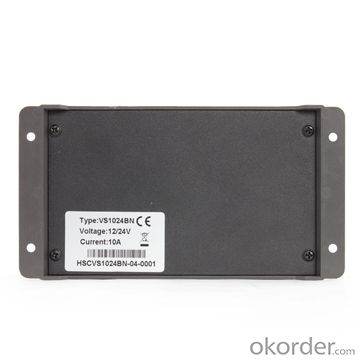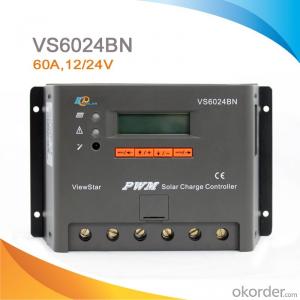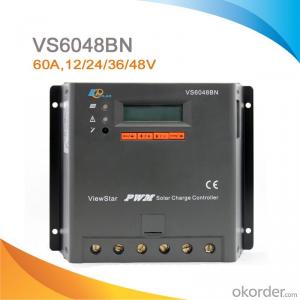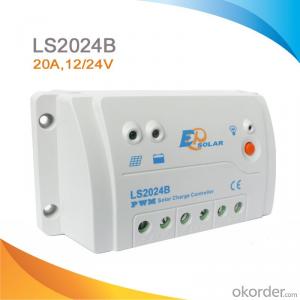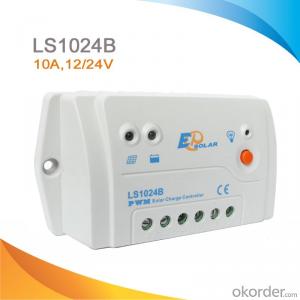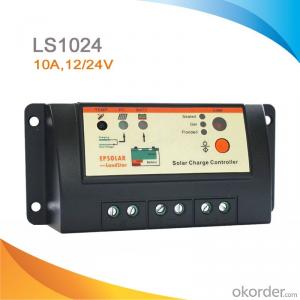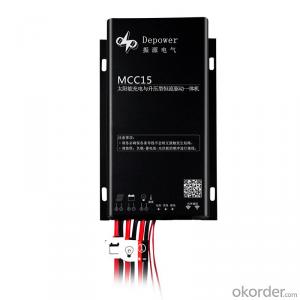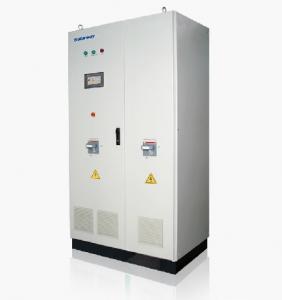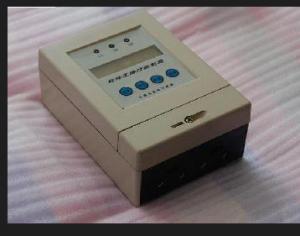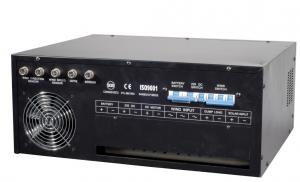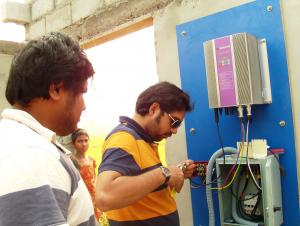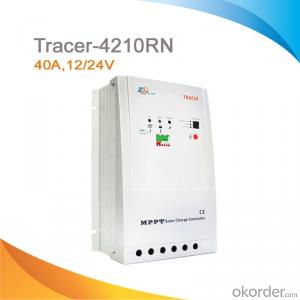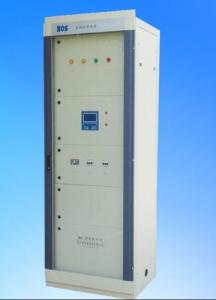60 Amp Intelligent PWM Solar Charge Controller for Solar Street Light, 12V/24V, VS1024BN
- Loading Port:
- China main port
- Payment Terms:
- TT or LC
- Min Order Qty:
- -
- Supply Capability:
- -
OKorder Service Pledge
OKorder Financial Service
You Might Also Like
Features:
·Excellent EMC design
·32 bit MCU with high speed
·High efficient Series PWM charging
·Four battery type options: Sealed, Gel, Flooded, and USER
·Intelligent lighting and timer control for solar lighting system
·12 bit A/D high-precision sampling to ensure accuracy
·Use MOSFET as electronic switch
·Full control parameters setting and modification, diversified load control mode
·Humanized design of browser interface, undertake every operating conveniently
·Temperature compensation
·Adopt graphics dot-matrix LCD screen and HMI (human-machine interface) with 4 buttons,integrated menu displaying and operation
·Energy statistics function
·RS485 ports with MODBUS communication protocol
·Optional PC monitoring software and remote meter for real-time monitoring and battery management parameter setting
·Field upgradable firmware
Specification:
Model | VS1024BN | VS2024BN | VS3024BN | VS4524BN | VS6024BN |
Nominal system voltage | 12V/24V auto work | ||||
Rated battery current | 10A | 20A | 30A | 45A | 60A |
Rated load current | 10A | 20A | 30A | 45A | 60A |
Max. battery voltage | 32V | ||||
Equalize charging voltage | Sealed: 14.6V, Flooded: 14.8V, User-defined: 9~17V | ||||
Boost charging voltage | Gel: 14.2V, Sealed: 14.6V, Flooded: 14.8V, User-defined: 9~17V | ||||
Float charging voltage | Gel /Sealed /Flooded: 13.8V, User-defined: 9~17V | ||||
Low voltage reconnect voltage | Gel /Sealed /Flooded: 12.6V, User-defined: 9~17V | ||||
Low voltage disconnect voltage | Gel /Sealed /Flooded: 11.1V, User-defined: 9~17V | ||||
Self-consumption | ≤15mA(12V); ≤10mA(24V); ≤9mA(36V); ≤8mA(48V) | ||||
Grounding | Common negative | ||||
Temp. compensation | -3mV/°C/2V | ||||
Relative humidity | 10%~90% Non-condensation | ||||
Communication | RS485 / RJ45 interface | ||||
LCD temperature | -20°C ~ +70°C | ||||
Working temperature | -25°C ~ +55°C | ||||
Humidity | ≤95% N.C. | ||||
Enclosure | IP30 | ||||
Overall dimension | 162x85x40mm | 162x100x50mm | 200x103x58mm | 201x109x59mm | 205x129x67mm |
Terminals | 4mm2 | 10mm2 | 16mm2 | 35mm2 | 35mm2 |
Net weight | 0.2kg | 0.4kg | 0.7kg | 0.9kg | 1.3kg |
Warrenty
provides a 1~3 year limited warranty (“Warranty”) against defects in materials and workmanship for its Uninterruptible power supply,
Power inverter/chargers, Solar charge controllers, Battery Products (“Product”).
The term of this Warranty begins on the Product(s) initial purchase date, or the date of receipt of the Product(s) by the end user,
whichever is later. This must be indicated on the invoice, bill of sale, and/or warranty registration card submitted to MUST-Solar.
This Warranty applies to the original MUST-Solar Product purchaser, and is transferable only if the Product remains installed in the original use location.
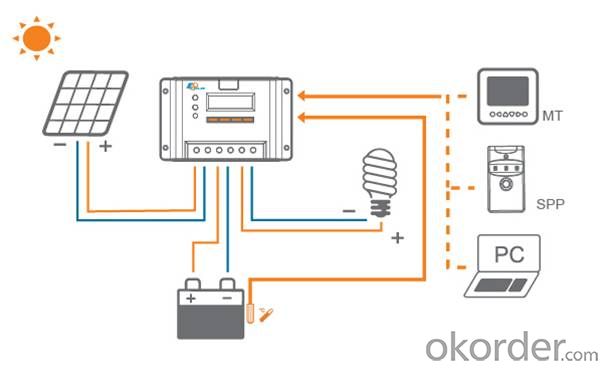
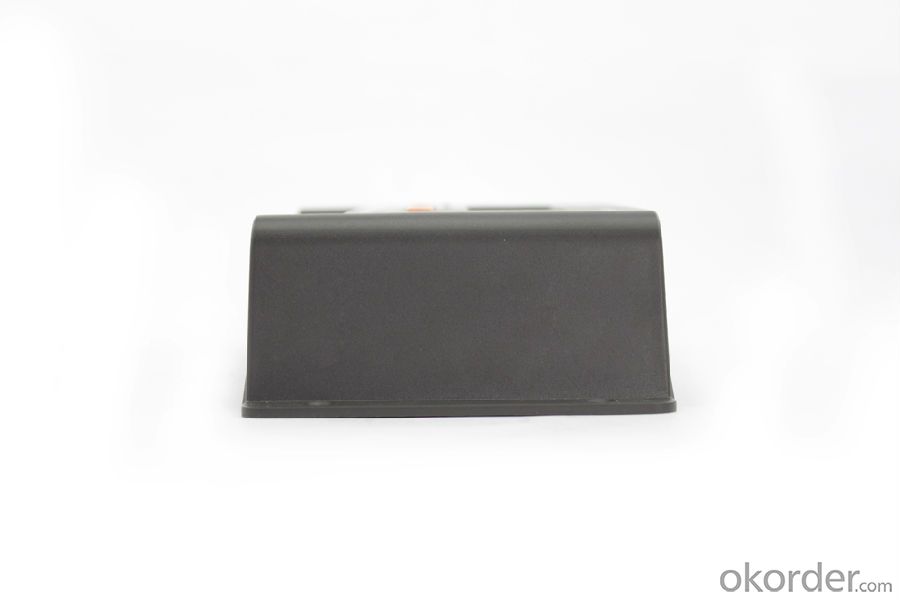
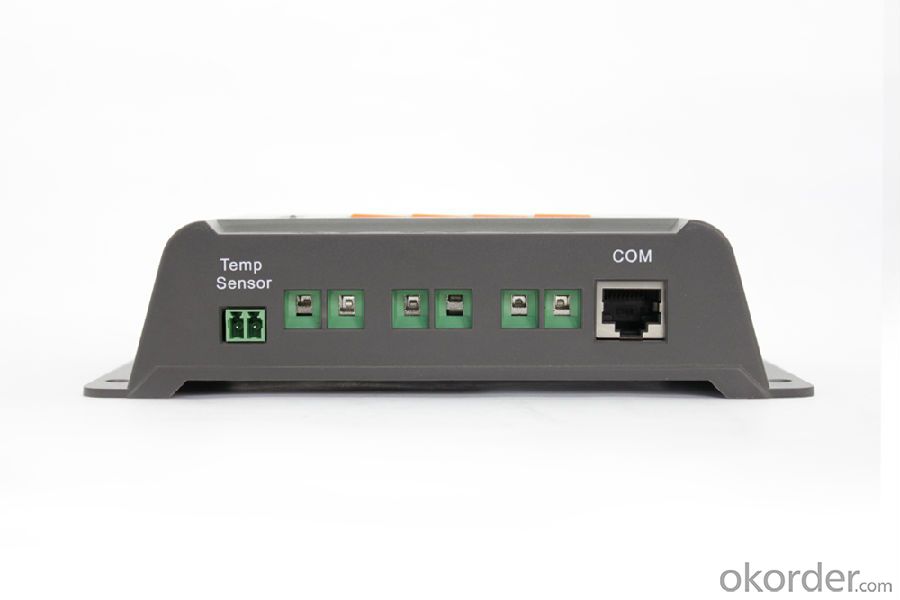
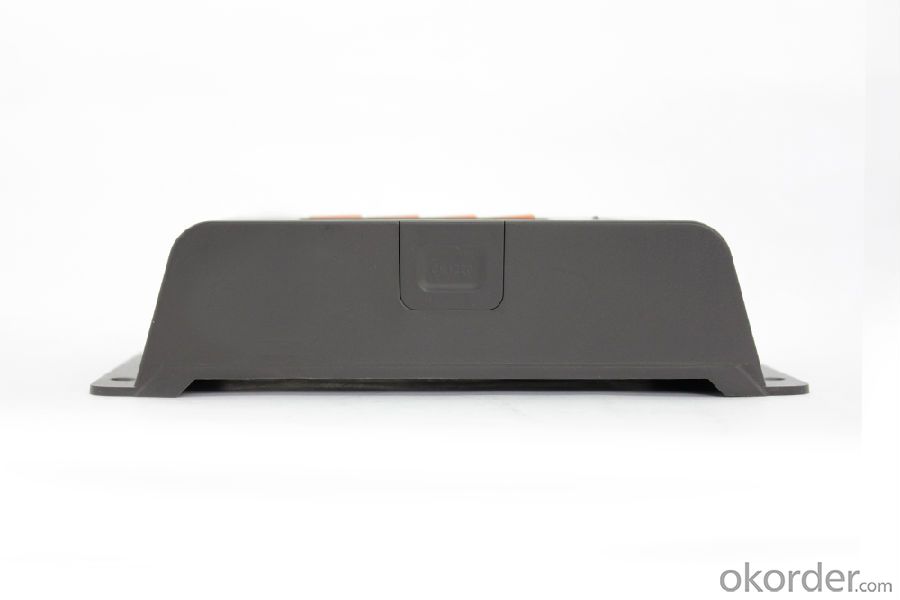
FAQ:
Q1. What is the voltage?
A1. Our 45/60A solar charge controller is 12/24/36/48V auto work.
Q2. What is the difference between MPPT&PWM?
A2. MPPT has higher efficiency, it can track the max power point and won't waste energy.
Q3. What is the efficiency of the MPPT controller?
A3. MPPT>99%, peak conversion efficiency>98%.
Q4. What is the waranty of product?
A4. 12 months.
Q5. What protection does your MPPT controller have?
A5. PV array short circuit, PV reverse polarity, Battery reverse polarity, Over charging, Output short circuit.
- Q: What is the maximum number of solar panels that a solar controller can handle?
- The maximum number of solar panels that a solar controller can handle depends on the specific model and its capacity. Different solar controllers have varying power ratings and can handle different numbers of panels. It is essential to refer to the specifications provided by the manufacturer to determine the maximum number of solar panels that a specific solar controller can handle.
- Q: Can a solar controller be used with a solar-powered industrial facility?
- Yes, a solar controller can be used with a solar-powered industrial facility. A solar controller is an essential component of a solar power system as it regulates the flow of electricity from the solar panels to the facility's equipment, ensuring efficient energy usage and preventing overcharging or damage to the batteries. It helps optimize the power generation and distribution process, making it suitable for use in large-scale industrial applications such as factories, warehouses, or manufacturing plants.
- Q: How does a solar controller handle variations in solar irradiation levels?
- A solar controller handles variations in solar irradiation levels by continuously monitoring the incoming solar energy and adjusting the charging parameters accordingly. It uses a sophisticated algorithm to optimize the charging process and ensure maximum efficiency regardless of the changing solar conditions.
- Q: How do I prevent short-circuiting with a solar controller?
- To prevent short-circuiting with a solar controller, there are a few important steps you can take: 1. Proper wiring: Ensure that all wiring connections are securely tightened and properly insulated. Loose or exposed wires can increase the risk of short-circuiting. Use high-quality cables and connectors that are rated for the current and voltage of your solar system. 2. Fuse or breaker protection: Install appropriate fuses or circuit breakers in the positive and negative connections between the solar panels, controller, and battery bank. These protective devices will automatically disconnect the circuit in case of a short-circuit, preventing any damage to the controller or other components. 3. Regular maintenance: Inspect your solar system regularly for any signs of wear, damage, or loose connections. Clean the panels to ensure maximum efficiency and remove any debris that could potentially cause a short-circuit. 4. Proper grounding: Ensure that your solar system is properly grounded. This involves connecting the negative terminal of the battery bank to a grounding rod. Grounding helps to dissipate any stray electrical charges and reduces the risk of short-circuiting. 5. Use an appropriate solar controller: Make sure you select a solar controller that is suitable for your specific solar system configuration and its maximum current and voltage requirements. Oversized or undersized controllers can increase the risk of short-circuiting. 6. Follow manufacturer guidelines: Always consult the manufacturer's instructions and guidelines for your specific solar controller. They often provide specific recommendations and precautions to prevent short-circuiting and ensure the safe operation of your solar system. By following these preventive measures, you can greatly reduce the potential for short-circuiting in your solar controller and ensure the efficient and safe functioning of your solar power system.
- Q: Are there any safety features in solar controllers?
- Yes, there are several safety features in solar controllers. One of the main safety features is overcharge protection. Solar controllers are designed to prevent the batteries from overcharging by regulating the amount of current flowing into the batteries. Once the batteries are fully charged, the solar controller will automatically reduce or stop the charging process to prevent damage to the batteries. Another safety feature is over-discharge protection. Solar controllers monitor the voltage of the batteries and prevent them from discharging below a certain threshold. This helps to prolong the lifespan of the batteries and prevents damage that can occur from over-discharging. Short circuit protection is also an important safety feature in solar controllers. In the event of a short circuit, the solar controller will detect the abnormal current flow and automatically shut off the circuit to prevent any damage to the solar panels, batteries, or other connected devices. Additionally, some solar controllers have temperature compensation features. These controllers can adjust the charging voltage and current based on the temperature of the batteries, ensuring optimal charging performance and preventing overheating or damage due to extreme temperature conditions. Overall, solar controllers are equipped with various safety features to protect the batteries, solar panels, and other connected devices from potential hazards and ensure efficient and safe operation of the solar power system.
- Q: What is the typical response time of a solar controller in adjusting the charging parameters?
- The response time of a solar controller in adjusting charging parameters can vary based on factors such as the controller model, design, and charging system complexity. However, modern solar controllers generally have quick response times, typically ranging from milliseconds to seconds. Solar controllers continuously monitor the solar panel's output and battery's charge level, making adjustments as needed. When the solar panel produces more power than the battery can handle, the controller must respond promptly to prevent overcharging and battery damage. Maintaining optimal charging parameters relies on the solar controller's ability to accurately detect changes in panel output and battery conditions. This ensures efficient and safe charging, maximizing the battery's lifespan and performance. Several factors influence the response time, including the controller's sensing and control circuitry, component quality, and overall design. Advanced controllers with improved technology and control algorithms tend to have faster response times. It's worth noting that manufacturers often provide specific response time information in the technical specifications of their solar controllers. For accurate and detailed information on the response time of a particular model, it is recommended to consult these specifications or contact the manufacturer directly.
- Q: Solar controller 10a, a represents what
- 10A indicates that it can control the maximum current is 10 amps, the use of the load can not be greater than this current.
- Q: How do you determine the charging parameters for a solar controller?
- To determine the charging parameters for a solar controller, there are a few key factors to consider. Firstly, you need to determine the battery type you are using. Different battery types, such as lead-acid or lithium-ion, have different charging requirements. Each battery type has a specific voltage range and recommended charging current. It is crucial to refer to the manufacturer's specifications for your battery to ensure safe and optimal charging. Next, you should consider the solar panel specifications. Solar panels have a maximum power rating, which indicates the amount of power they can generate under ideal conditions. You need to ensure that the solar controller you choose can handle the maximum voltage and current output of your specific solar panel. Additionally, you must factor in the system voltage. The system voltage is determined by the overall setup of your solar power system, including the battery bank, solar panels, and any other components. Common system voltages include 12V, 24V, or 48V. The solar controller you select must be compatible with the system voltage to ensure efficient charging. Furthermore, it is important to consider the desired charging algorithm. Solar controllers offer different charging algorithms, such as pulse width modulation (PWM) or maximum power point tracking (MPPT). PWM controllers are simpler and more cost-effective, but MPPT controllers are more advanced and can maximize the power output of the solar panels. The charging algorithm you choose depends on your specific needs and budget. Lastly, you should take into account any specific requirements or features you may need. Some solar controllers offer additional functionalities like temperature compensation, which adjusts the charging parameters based on the battery temperature. This feature can help optimize charging efficiency and prolong battery life. Overall, determining the charging parameters for a solar controller involves considering the battery type, solar panel specifications, system voltage, desired charging algorithm, and any specific requirements or features. It is crucial to carefully review the manufacturer's guidelines and specifications to ensure proper and efficient charging of your solar power system.
- Q: Can a solar controller be used with a solar-powered data center?
- Yes, a solar controller can be used with a solar-powered data center. A solar controller regulates the flow of electricity from the solar panels to the batteries, ensuring optimal charging and preventing overcharging. This is essential for maintaining a stable power supply in a solar-powered data center, as it helps regulate and manage the energy generated by the solar panels.
- Q: Can a solar controller be used with solar panel ground racks?
- Yes, a solar controller can be used with solar panel ground racks. A solar controller is responsible for regulating the flow of electricity between the solar panels and the battery bank. It controls the charging process to ensure the batteries are not overcharged or damaged. Whether the solar panels are mounted on the ground or on a rooftop does not affect the functionality of the solar controller.
Send your message to us
60 Amp Intelligent PWM Solar Charge Controller for Solar Street Light, 12V/24V, VS1024BN
- Loading Port:
- China main port
- Payment Terms:
- TT or LC
- Min Order Qty:
- -
- Supply Capability:
- -
OKorder Service Pledge
OKorder Financial Service
Similar products
Hot products
Hot Searches
Related keywords
